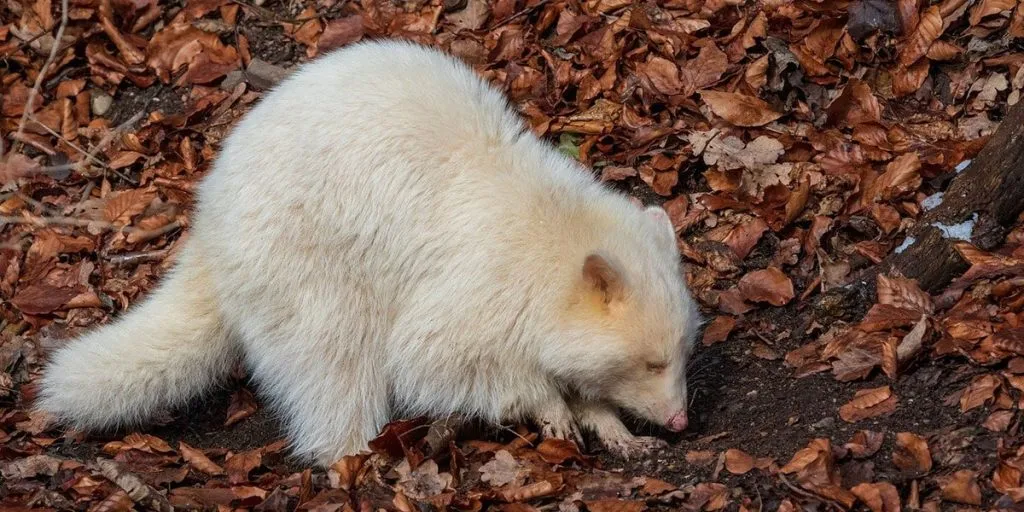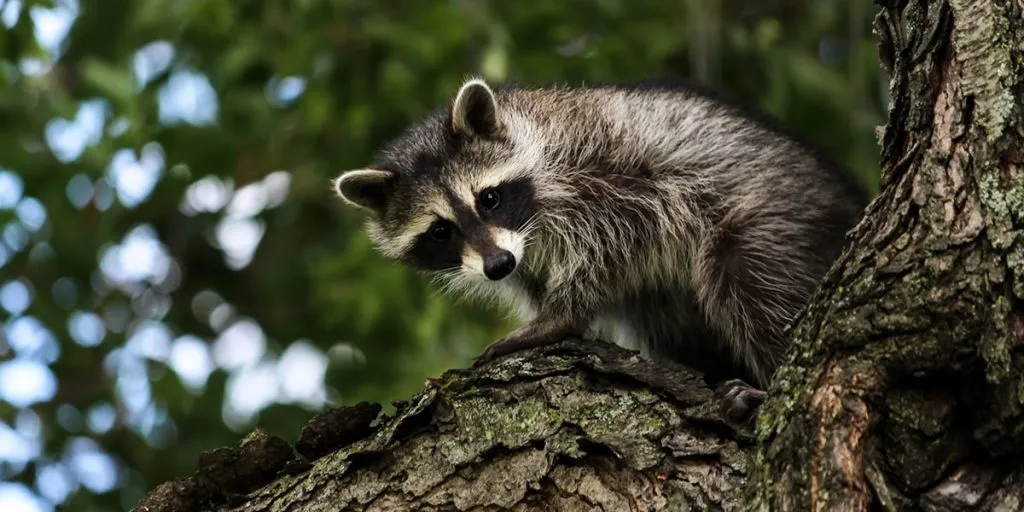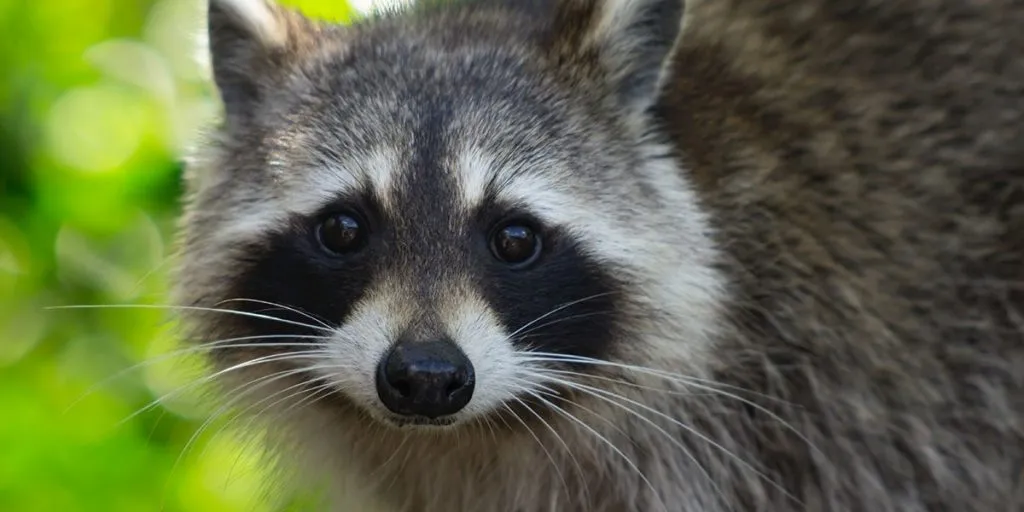Encountering an albino raccoon in the wild is very rare. These so-called blonde or white raccoons are sometimes sold and kept as pets, although even in that world they are not that common.
Albinism in raccoons is caused by a rare genetic mutation, occurring in an estimated 1 in 10,000 individuals. Albino raccoons trade their characteristic black and grey fur colors for full snow-white fur. This makes an albino raccoon highly vulnerable to predators.
Only a select few albino raccoons will ever grow old in the wild. This makes the odds of ever encountering an individual with albinism extremely slim. You are more likely to win the lottery than to ever see one in the wild.
The Odds Of Seeing An Albino Raccoon
Scientists estimate that the odds of ever seeing a wild albino raccoon is only a 1 in 750,000 chance. Albinism in wild raccoons is so rare, that encountering a white raccoon in nature is smaller than getting hit by a meteorite in any given year.
Why is it so unlikely to see an albino raccoon in nature? The albino raccoon is more likely to get eaten by its natural predators. Since raccoons get eaten by quite a lot of predators, standing out with white fur is not very helpful.
White Raccoons Are Popular Pets
While uncommon, the infamous ‘trash panda’ is sometimes kept as a pet. Keeping a raccoon as a pet is legal in 16 US states. Owners should be aware of additional regulations on how to keep these animals, which might differ for each individual state.
However, animal experts do not recommend keeping a raccoon as a pet, since they are still unpredictable wild animals. It’s also risky to own one, because they can carry deadly diseases like rabies.
But that doesn’t stop a lot of people. In fact, they will often seek out individuals with unique traits, such as white fur. Babies are usually more desirable than adults, as they are deemed ‘cute’. This makes a baby albino raccoon an extremely rare, but highly sought-after expensive pet.
Albinism Is An Inherited Trait
You might wonder why these snow-white raccoons are so extremely rare, when in fact it is a genetic defect that can be inherited. The main reason is that individuals with albinism usually don’t reach reproductive maturity. In other words: they won’t grow old enough to make babies.
It is not uncommon for a mother raccoon to reject an albinistic baby, based on its unique features.
But even if the baby makes it to maturity, predators are likely to target them more often. It’s not hard to see why, since all you need to do is compare them to a ‘normal’ individual:
The extremely rare photo above is taken by photographer Martin Ouellette. He managed to spot two albino individuals in one evening, in his hometown of Windsor, Ontario (Canada). Imagine being able to snap a picture of these rare creatures, amazing!
Two Albino Raccoon Varieties Exist
While rare, scientists have determined that two separate varieties of albino raccoons exist. One with a complete all-white fur, and one with a complete off-white fur. The two different tints are based on the genetic traits inherited from the parents.
The difference between the all-white and off-white varieties is small. It is the specific tint of white that gives it away.
The off-white variety will be slightly darker, and therefore ever so slightly less likely to be spotted by predators. A full snow-white fur cover is therefore even rarer to find. Which makes it all the more unique to encounter one!
Albinism Occurs In All Mammals
Raccoons aren’t the only mammals (no, they’re not rodents) that can carry albinism in their DNA. Almost all mammals can carry a similar genetic mutation. Albinism in mammals is caused by an inability to produce a chemical called melanin, which is what pigments the skin and hair.
The defect in their DNA can create some amazing (and rare) sights in the natural world. There are some common traits that make both animals and humans with albinism stand out, including:
- The absence of color in the hair, skin, or eyes;
- Lighter than normal coloring of the hair, skin, or eyes;
- Patches of skin that can have an absence of color.
The compilation video below provides a helpful insight into the world of albinism. If you ever encounter one of these ‘real-life shinies’ in the wild, make sure to make a wish. Because you just saw something incredibly rare.
Albino Raccoons Suffer From Eye Problems
For the raccoon, this translates into fully snow-white, or off-white fur. But there are more traits that we often do not consider. Poor eyesight is a common problem for those suffering from this genetic mutation.
This will usually translate in sensitivity to light, as well as a high chance to have blurred vision. This is another reason why albinistic animals often do poorly in the wild. If they suffer from an eye condition, it will be harder to forage for food and escape from danger.
While a raccoon with albinism might seem cute at first, remember that it’s actually a serious problem for these animals. There is no special meaning behind encountering an albino raccoon, it is simply a twist of fate caused by a genetic mutation.



